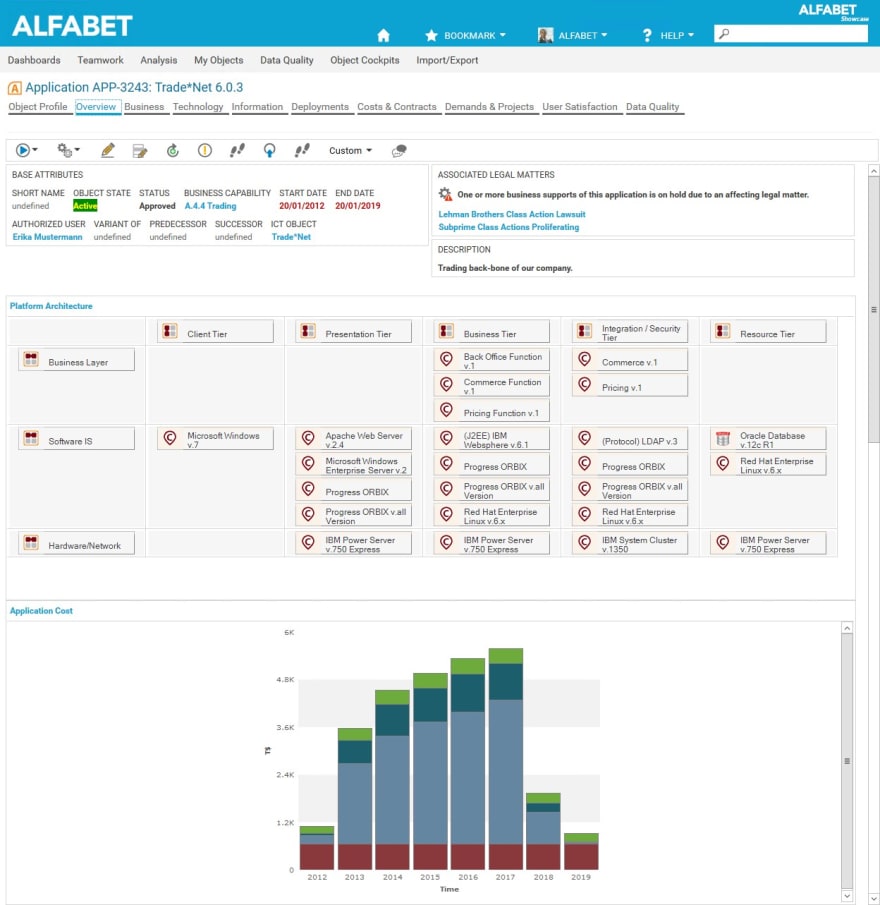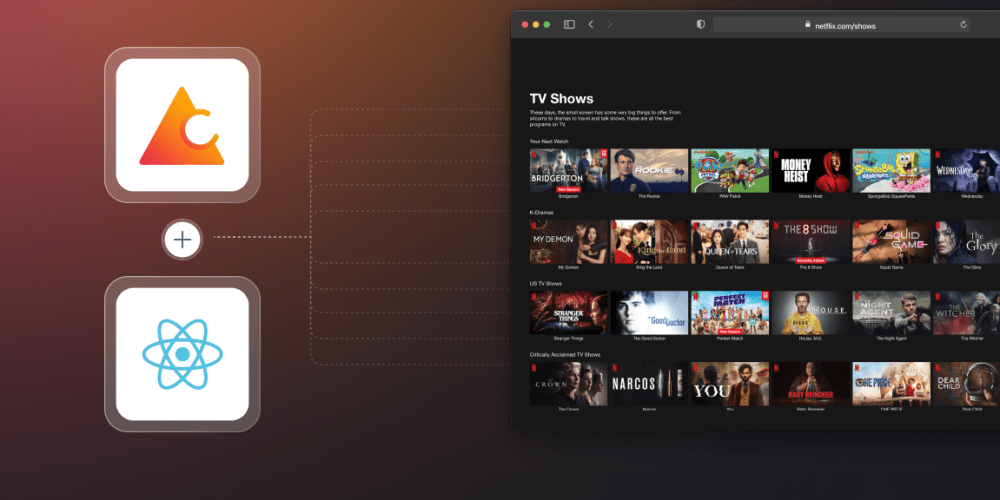Configuring information displays in Alfabet
In this series we look at how to configure the Alfabet product for best fit and best practices in business and IT transformation. This article focuses on displaying information in Alfabet.
| Issue 4, 2017 |  Download PDF Download PDF |
|---|
Introduction
Supporting business and IT transformation processes requires a wealth of information on the individual elements that are involved and their positioning vis-à-vis each other in various analyses. For the latter, Alfabet provides many standard and configurable reporting possibilities. These will be discussed in a later article. For the former, object views can be configured to define which information for a particular class (or class stereotype) is viewed and how it is viewed. The possibility to define various views for different stakeholders ensures that users have only the information relevant for their particular responsibility, increasing attractiveness of the solution, efficiency of the task and security of the information.
Configuring and using the object view
Configuration options include defining what information is shown, how information is grouped together and the relevant captions for information sets. User interface terms and tooltips used in the object view can be configured to match established enterprise terminology and to explain what is meant by the terms—contributing to the development and acceptance of a common nomenclature in the enterprise.
In addition to the standard set of information that’s provided in an object view, the object view can be populated by information that is found via queries so that even more sources of information can be included in the object view. Reports can be displayed in the object view, making them easily accessible to the user.
The object view includes the object profile as well as any object cockpits that have been configured for the object view. The object profile is considered an encompassing collection of basic information and links to more detailed page views, and the object cockpits are considered a topical and focused set of data including attribute information as well as the content of specific page views.
Alfabet provides a standard object profile that displays standard attributes and page views. These can be adapted to fit the organization’s needs for various user profiles.
Figure 1: Standard interface Preconfigured standard object profiles that are delivered with the product can be used as templates for creating and configuring custom object profiles adapted to the organization's needs.
Leveraging data with object cockpits
Object cockpits are an alternative representation of information on transformation planning and management elements. An object cockpit provides users with an immediate and transparent overview of data for a selected object because reports are immediately presented to the user in a windowed display. It is an abbreviated and focused presentation of object data, typically from a particular perspective, such as an architecture perspective or a strategy perspective, and is available in addition to the more comprehensive object profile. You can define multiple object cockpits for an object view. Each object cockpit can be configured to be relevant to a specific perspective (for example, a business perspective, technical perspective, financial perspective, etc.). This allows you to create object cockpits with a manageable amount of data that users can quickly and easily comprehend.
Object cockpits provide the user with an overview of relevant data before drilling down into details and are an excellent device for exception handling. Rule-based highlighting, icons, and conditional field formatting all make it easier for the user to pick up on important information. A cockpit can also display a URL, document link or properties that are fetched via a query. Furthermore, views and configured reports can be embedded in a cockpit so that users can immediately see data without having to navigate to another page.
Figure 2: This object cockpit for the application “Trade*net” displays information relevant to a solution architect.
Individual user profiles and classes can have several object cockpits configured that allow the user to view information on an object according to different perspectives. For example, one object cockpit for the object class “Application” might display data relevant for understanding the application in the as-is architecture while another object cockpit might display data relevant for business analysis issues as illustrated in figures 2 and 3.
Figure 3: This object cockpit for the application “Trade*net” displays information relevant to the business analyst.
Object cockpit designers can configure the user profile-specific cockpits with grouping of information with specific attributes, charts and tables into theme-oriented sections in the cockpit. Rule-based highlighting and icons can be configured to provide the user with visual cues on important information. Navigation can be configured to define where to take the user upon clicking an element in the cockpit.
Stay tuned for our next article on configuring user profiles in Alfabet.





















